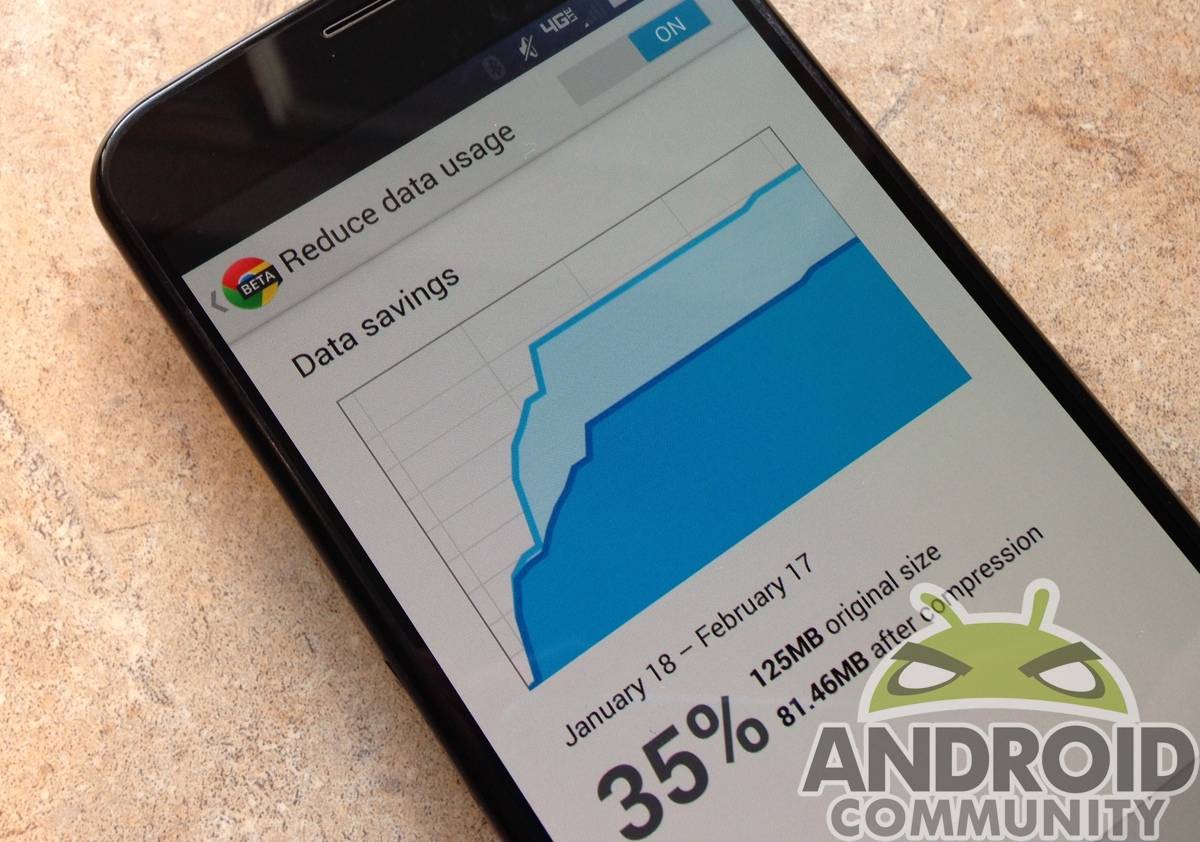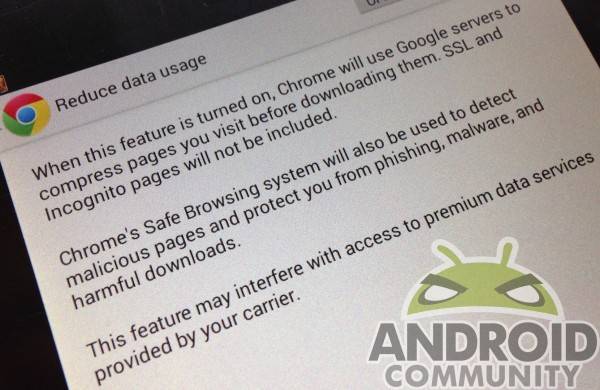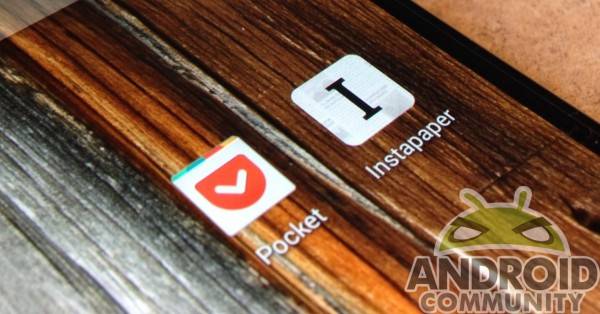
With shared or tiered data plans fast becoming the new normal, many of us will want to find ways to maximize the small pool of data we draw from. Though we typically don’t use more than 2GB monthly, there is a glass ceiling. After the limit, it’s usually pretty expensive to get past it.
You can maximize your data, though. With a few easy tricks, you might find yourself living comfortably in the field of data your carrier offers you. These tricks can also be helpful if you have a data throttling limit, where you get severely reduced speeds after a predetermined limit.
Bandwidth Management in Chrome
In Chrome, there is an opt-in for Bandwidth management. Doing so can greatly reduce the data you use within Chrome, saving you a ton of data. As you can see from the picture above, though I don’t use Chrome a lot while mobile, the reduction in data used is noticeable. To scale, that could end up saving you a lot of data, which counts against your plan.
If you’re not prompted to sign up for the service, go to Chrome > Settings > Advanced > Bandwidth Management. You should see an option for Bandwidth Management. If you don’t see the option, try downloading Chrome Beta — it’s definitely there.

Maps & Location Services
If you’re traveling, data roaming can be a concern on top of the imposed limitations. You probably don’t want to leave your phone behind, but you still want to get around — and use Maps to do so. With Google Maps, you can save maps for offline use, which could save you a ton of data use.
For the newer versions of Google Maps (6.1 and above), saving a map for offline us is really simply. When you have the area on the screen you want saved, just type “ok maps” into the search bar, and it will start the cache process. If you don’t have time or the ability to type, just tap the search field on the map, and scroll down to the bottom (seen below), where you’ll find the option to save the area on your screen for offline use.
Once saved, you can access the saved map from the regular mobile maps interface. Just scroll over to the place you have saved, and zoom in. It gives you an area around your saved location as well, so don’t worry about venturing a bit off the beaten path.

Reading offline
You find a cool article while at home, and dedicate yourself to pick it up while on the train or waiting for a doctor appointment. When you do that, you’re using data, unless you use one of the tricks for offline use. By saving an article to an offline reading app, you can enjoy plenty of reading while on-the-go, all without having to soak up data.
We like Instapaper, because it lets you create folders for cataloging articles. The interface is also dead simple and clean, making it a joy to flip through. Others like Evernote or Pocket are equally as useful, though. Just make sure any app you want to use has an offline reading function, and you’re on your way.
When you find an article, be it in Chrome or other apps like Zite, simply save it to the reading app of your choice. With Android, most dedicating reading apps have a sharing function that is automatically added. If you’re an avid reader, or want to read while you have some downtime in the wild, this is a must-have.

Conclusion
Though these aren’t the only ways to save a bit of data, they are some of the easiest. They also represent functions that will show an immediate impact, if you use these services. Chrome is one of the better served here, as it is used for quite a bit more than you might think. Offline Maps is also really neat, especially if you’re in an area that has poor reception — be it traveling or in your home city.
One thing to keep in mind is that with Maps and your reading habits, it’s best to save those when you have WiFi available. By saving things for offline use while on WiFi, then accessing them later, you’re using almost no data at all. That’s called ‘sticking it to the carrier’!










Great article I am definitely glad I don’t have to worry about these issues. If it’s not unlimited then it’s not right.